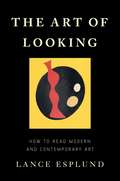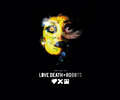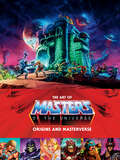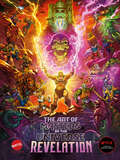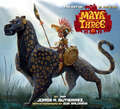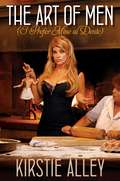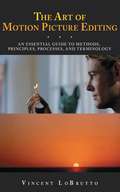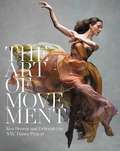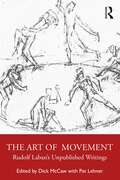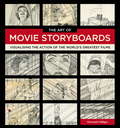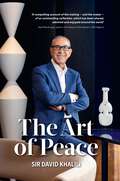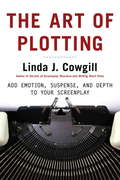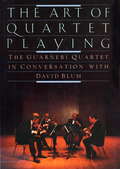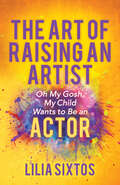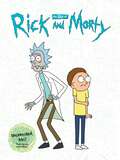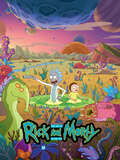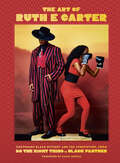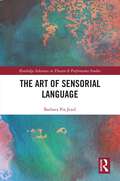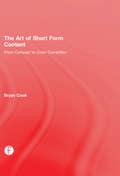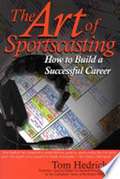- Table View
- List View
The Art of Looking: How to Read Modern and Contemporary Art
by Lance EsplundA veteran art critic helps us make sense of modern and contemporary artThe landscape of contemporary art has changed dramatically during the last hundred years: from Malevich's 1915 painting of a single black square and Duchamp's 1917 signed porcelain urinal to Jackson Pollock's midcentury "drip" paintings; Chris Burden's "Shoot" (1971), in which the artist was voluntarily shot in the arm with a rifle; Urs Fischer's "You" (2007), a giant hole dug in the floor of a New York gallery; and the conceptual and performance art of today's Ai Weiwei and Marina Abramovic. The shifts have left the art-viewing public (understandably) perplexed.In The Art of Looking, renowned art critic Lance Esplund demonstrates that works of modern and contemporary art are not as indecipherable as they might seem. With patience, insight, and wit, Esplund guides us through the last century of art and empowers us to approach and appreciate it with new eyes. Eager to democratize genres that can feel inaccessible, Esplund encourages viewers to trust their own taste, guts, and common sense. The Art of Looking will open the eyes of viewers who think that recent art is obtuse, nonsensical, and irrelevant, as well as the eyes of those who believe that the art of the past has nothing to say to our present.
The Art of Love, Death + Robots
by Ramin ZahedImmerse yourself in the official collection of artworks from the first three volumes of Love, Death + Robots, and discover the stories and inspirations behind this beloved Netflix series.Love Death + Robots is a Netflix series like no other—a breath-taking journey of mature, high-concept tales told with seductive characters, astounding plots, and explosive action. With each episode crafted by different animation teams across the globe, the thought-provoking anthology covers a vast range of animation styles from edgy 2D to stop-motion to anime to hyper-realistic 3D CG. In this luxury book, discover the wealth of artwork and stories behind the creation of the series&’ first three volumes. Includes interviews with key artists and creatives such as series creators Tim Miller and David Fincher, and is full to the brim with everything from beautiful concept art, character studies, costume sketches, paintings, vehicle designs, storyboards, and early vision decks, through to finished frames. Perfect for any fan of animation.
The Art of Masters of the Universe: Origins and Masterverse
by Mattel Alex IrvineHeroes and Villains of Origins and Masterverse come alive!This beautifully designed volume gives a deep dive into the lore and world of the Mattel hit figure lines, Masters of the Universe: Origins and Masterverse. Explore each figure&’s background, as well as detailed and wonderfully laid out artwork from the products themselves. Also, the tome will feature new insights from the creators of the figures, written by Alex Irvine (The Comic Book Story of Baseball, Marvel Phase One through Three)!Dark Horse Books and Mattel proudly present: The Art of Masters of the Universe: Origins and Masterverse!
The Art of Masters of the Universe: Revelation
by MattelA one of a kind, oversized hardcover exploring the newest addition to the Masters of the Universe world!Diving deep into the process of the show, this tome features detailed explorations into your favorite aspects of the show. Explore character art from the development stages to the finished product, as well as extensive looks at the world and locations of Eternia! Dark Horse Books, Mattel, and Powerhouse Studios proudly present The Art of Masters of the Universe: Revelation. A look into the world that will leave you yelling &“I have the Power!&”
The Art of Maya and the Three
by Jorge GutierrezA vibrant, oversized hardcover showcasing the concept and production art from the beautiful Netflix series by visionary animator and filmmaker, Jorge R. Gutierrez. Meet Maya, the eagle-warrior princess and all the dazzling characters that breathe life into lush and detailed landscapes magically inspired by Mesoamerican, Incan, and Caribbean cultures. Behold the original vision for the series taken from early sketches to final animated wonders, with detailed storyboards, color scripts, and in-depth, bilingual (English and Spanish) commentary. Welcome to the vivid world of Maya and the Three! Bilingual Captions in English and Spanish.
The Art of Men (I Prefer Mine al Dente): (I Prefer Mine al Dente)
by Kirstie AlleyEmmy Award-winning actress Kirstie Alley’s candid and audacious memoir about her life and the men she has shared it with—for better and for worse.John Travolta. Parker Stevenson. Ted Danson. Maksim Chmerkovskiy. Kelsey Grammer. Patrick Swayze. Woody Allen. Woody Harrelson. And many others. . . . In three decades in Hollywood, Kirstie Alley has lived with, worked with, loved, or lost all of these men, and in this revealing memoir, she peels back the layers (and sometimes the sheets) on her relationships with all of them. From the early days of her childhood in Wichita, Kansas, surrounded by her loving father, her inquisitive and doting grandfather, and a younger brother she fiercely protected when she wasn’t selling tickets to see him naked, Kirstie Alley’s life has been shaped and molded by men. “Men, men, glorious men!” gave her her first big break in Hollywood and her awardwinning role on Cheers, and through two marriages, a debilitating cocaine addiction, the death of her mother, roles in some of the biggest comedies of the last twenty years, and a surprising stint on Dancing with the Stars, men proved to be the inspiration for multitudes of the decisions and dramas in Kirstie Alley’s life. In this collection of linked essays that’s both hilarious and poignant in turns, Kirstie chronicles all the good, the bad, and the ugly men who have influenced and guided her. She demonstrates how men can be the air that women breathe or the source of all of their frustrations. But for better or worse, Kirstie shows that a life well lived is a life lived in the company of men, especially if they remember to put the lid down. The Art of Men (I Prefer Mine al Dente) is a hilarious excursion into love, joy, motherhood, loss, sex, and self-discovery from one of Hollywood’s most enduring stars.
The Art of Miss Peregrine's Home for Peculiar Children
by Ransom Riggs Tim Burton Leah GalloA stunning visual tour of Miss Peregrine's Home for Peculiar Children, filled with exclusive interviews, on-set photography, and special introductions by director Tim Burton and Peculiar Children series author Ransom Riggs.Tim Burton's adaptation of the Ransom Riggs novel Miss Peregrine's Home for Peculiar Children is one of the most anticipated films of the year--and this lavishly illustrated companion offers a thrilling behind-the-scenes look. Written and designed by two of Burton's longtime collaborators, this book chronicles every step in the making of the film--from script development and casting to concept art, set design, costumes, visual effects, and much more. Filled with exclusive interviews, on-set photography, and special introductions by Tim Burton and Ransom Riggs, this deluxe hardcover volume is a terrific gift for peculiars of all ages!
The Art of Motion Picture Editing: An Essential Guide to Methods, Principles, Processes, and Terminology
by Vincent LobruttoLearn how to use images and sound to tell a motion picture story. This guide reveals how editing affects a motion picture's pace, rhythm, structure, and story, and spells out exactly what an editor does. The tools, methods, and processes of movie editing in any medium are revealed so that readers working with film, video, or digital equipment can apply the principles to all their work, from studio theatrical releases to short works for the Internet.Chapters cover the full language of editing, from composite shots and flash cuts to dissolves, reverse angles, and more, a well as various schools of editing thought, including Russian montage, cinema verite, avant-garde cinema, Italian neorealism, and Hollywood continuity. This complete resource blends the practical and philosophical aspects of film editing and includes unique features like a shot-by-shot analysis of landmark films, a detailed glossary of related terms, profiles of ten great editors, and a list of one hundred essential films that demonstrate top-notch editing work.
The Art of Movement
by Ken BrowarA stunning celebration of movement and dance in hundreds of breathtaking photographs of more than 70 dancers from American Ballet Theater, New York City Ballet, Alvin Ailey American Dance Theater, Martha Graham Dance Company, Boston Ballet, Royal Danish Ballet, the Royal Ballet, and many more.The Art of Movement is an exquisitely designed, beautifully produced book that captures the movement, flow, energy, and grace of many of the most accomplished dancers in the world. These are the artists, from all walks of life, who are defining dance today. Here they are frozen in time in the most exquisite poses, and yet there's a feeling of movement in every photograph that makes the appear to be dancing across the pages. Accompanying the photographs are intimate and inspiring words from the dancers, as well as from choreographers and artistic directors, on what dance means to them. Dance is experiencing an unprecedented moment in popular culture. The Art of Movement is the perfect book for newly avid fans, as well as long-time lovers of dance.
The Art of Movement: Rudolf Laban’s Unpublished Writings
by Dick McCawThe Art of Movement: Rudolf Laban’s Unpublished Writings offers new perspectives on the thinking and practice of Rudolf Laban – one of the pioneers of modern European dance and movement analysis. A wealth of Laban’s previously untranslated writings broadens our understanding of his work through new perspectives on his thinking and practice. Alongside these key primary sources, interviews with Laban’s family and colleagues and editorial commentaries shed new light on the significance of his life and career. Laban’s own texts also offer further elaboration of the key themes of his work – eukinetics, choreutics, lay dance, pedagogy and dance notation. This essential companion to The Laban Sourcebook is an ideal resource for any students or scholars of modern dance, dance studies, dance history and movement analysis looking for a deeper understanding of this seminal figure in their field.
The Art of Movement: Rudolf Laban’s Unpublished Writings
by Dick McCawThe Art of Movement: Rudolf Laban’s Unpublished Writings offers new perspectives on the thinking and practice of Rudolf Laban – one of the pioneers of modern European dance and movement analysis. A wealth of Laban’s previously untranslated writings broadens our understanding of his work through new perspectives on his thinking and practice. Alongside these key primary sources, interviews with Laban’s family and colleagues and editorial commentaries shed new light on the significance of his life and career. Laban’s own texts also offer further elaboration of the key themes of his work – eukinetics, choreutics, lay dance, pedagogy and dance notation. This essential companion to The Laban Sourcebook is an ideal resource for any students or scholars of modern dance, dance studies, dance history and movement analysis looking for a deeper understanding of this seminal figure in their field.
The Art of Movie Storyboards: Visualising the Action of the World's Greatest Films
by Fionnuala HalliganThe unsung heroes of film, storyboard artists are the first to give vision to a screenplay, translating words on the page into shots for the screen.Their work is a unique art form in itself. Many storyboards are beautiful in their own right, but ultimately the skill of the artist lies in their visual communication of a script, with multiple factors to consider: composition, movement, camera angles, special effects, and the rhythm and pacing of a scene.The Art of Movie Storyboards celebrates this art, showcasing a vast collection of storyboards in a range of styles, and including some of cinema's greatest moments. The collection includes the work of pioneers such as William Cameron Menzies (Gone with the Wind) and Saul Bass (Psycho, Spartacus), as well as contemporaries such as Raúl Monge (Pan's Labyrinth) and Jane Clark (Harry Potter and the Goblet of Fire). Many are seen here for the first time, and all are accompanied by insights into the films featured, their directors, and, of course, the storyboard artists.
The Art of Pacific Rim: The Black
by Andrew OsmondOfficial art book of Seasons 1 and 2 of the anime series Pacific Rim: The Black, featuring concept art created during the development of the series.The Art of Pacific Rim: The Black retraces Taylor and Hayley&’s dramatic odyssey from the perspectives of the talented producers, directors, writers and animators who created this immensely popular series. They provide fascinating insight into how the series came about, the development of the characters, the design of the Kaiju and Jaegers, and much more. This lush, coffee table hardback book is packed with stunning images from the series, including sketches, concept art and final renders. With an exclusive foreword from showrunner Greg Johnson and visuals covering Seasons 1 and 2, there has never been a better time to dive deeper into &‘The Black&’!
The Art of Peace
by Sir David KhaliliIn 1967, Sir David Khalili finished his military service in Iran and travelled to study in the United States with $750 - his remaining royalties from a book he wrote when he was just 14. Over the course of the next five decades he single-handedly, piece by piece, assembled eight of the finest art collections in their field, ultimately becoming one of the world's greatest collectors, about whom Queen Elizabeth II once said: 'It is scary how much this gentleman knows about art.'For the first time, Sir David shares his extraordinary journey: one that has taken him through the souks of North Africa, the auction houses of Europe and the United States, the bazaars of South Asia, and far beyond. Through a riveting collection of real-life adventures, he reveals his collecting strategy, business ethics and what motivates him to continuously collect, conserve, research, publish and exhibit the treasures in his collections. Through his story, Sir David questions how the undeniable power of art can be harnessed to foster greater peace and unity worldwide. No one is better placed to enlighten us.
The Art of Plotting: How to Add Emotion, Excitement, and Depth to Your Writing
by Linda J. CowgillPlot must be as much about the emotions of the characters as it is about the events of the story. That's the message of The Art of Plotting, which teaches screenwriters how to integrate plot, characterization, and exposition to make stories compelling. Using examples from recent and classic movies, author Linda J. Cowgill demonstrates how the plot springs naturally from the characters--and how that technique makes audiences connect with the story on a more intimate level. Easy exercises reveal common plot problems and help writers overcome them.
The Art of Quartet Playing: The Guarneri Quartet in Conversation with David Blum
by David BlumHow do four instrumentalists with strong individual tastes and temperaments manage to forge a distinctive approach to the music they play? This extraordinary book ushers readers into the workshop of one of the world's most accomplished string quartets. In rich and probing conversations with their longtime friend and musicologist and conductor David Blum, the members of the Guarneri String Quartet, both individually as a group, tell what it is like to play together.
The Art of Raising an Artist: Oh My Gosh, My Child Wants to Be an Actor
by Lilia SixtosThe Art of Raising an Artist guides parents in helping their children explore the world of acting and ultimately invest in their child’s future.Actor and director, Lilia Sixtos has seen thousands of auditions and taught hundreds of artists. By raising her two creative children, she has learned every possible way a creative person’s journey can be helped or hindered by their parents. In The Art of Raising an Artist, she shows parents how to:Identify the best training they can provide for their child within their meansDevelop a safe and loving space for the challenges of their child’s journeyCreate the support team their child needsFind their child’s nicheFit the needs of their child’s career with the needs of the whole family
The Art of Rick and Morty
by Justin RoilandFeaturing exclusive never before seen concept art with a killer Glow-in-the-Dark cover, this is the art book that Rick and Morty fans have been waiting for!The animated science-fiction adventures of Rick and Morty are irreverent, shocking, and hilarious--from the cynical and rapid-fire one liners, to the grotesquely and endearing character designs. Now, take a deep trans-dimensional dive into the creation of these many insane universes with The Art of Rick and Morty!This new book is a must-have, not only for followers of the series, but for fans of animation as well! Featuring intimate commentary from the show's creators accompanying a vast collection of process, concept, and production art, this striking volume offers a tantalizing exploration of one of the most outlandish and beloved shows on television. Don't miss your chance to see the amazing art that goes into creating this twisted and fantastic Adult Swim series!
The Art of Rick and Morty Volume 2
by Jeremy GilforThis full-color artbook showcases the third and fourth seasons of the animated science-fiction adventures of everyone's favorite alcoholic scientist and his grandson!Rick and Morty are back, baby! They never even left! Reruns, dog! Streaming! Anyway, grab your portal gun and get back to exploring the creation of this beloved TV series with its comical characters and their interdimensional counterparts, wack-a-doo aliens, and far-out locations. This full-color artbook showcases the interstellar art of the third and fourth seasons of your favorite animated sci-fi adventure.Dark Horse Books and Adult Swim offer another peek beneath the creators' curtain with The Art of Rick and Morty Volume 2. More concept art! More creator commentary! More stuff!
The Art of Ruth E. Carter: Costuming Black History and the Afrofuture, from Do the Right Thing to Black Panther
by Ruth E. CarterThe definitive, deluxe art book from costume design legend Ruth E. Carter.Ruth E. Carter is a living legend of costume design. For three decades, she has shaped the story of the Black experience on screen—from the '80s streetwear of Do the Right Thing to the royal regalia of Coming 2 America. Her work on Marvel's Black Panther not only brought Afrofuturism to the mainstream, but also made her the first Black winner of an Oscar in costume design. In 2021, she became the second-ever costume designer to receive a star on the Hollywood Walk of Fame.In this definitive book, Carter shares her origins—recalling a trip to the sporting goods store with Spike Lee to outfit the School Daze cast and a transformative moment stepping inside history on the set of Steven Spielberg's Amistad. She recounts anecdotes from dressing the greats: Eddie Murphy, Samuel L. Jackson, Angela Bassett, Halle Berry, Chadwick Boseman, and many more. She describes the passion for history that inspired her period pieces—from Malcolm X to What's Love Got to Do With It—and her journey into Afrofuturism.Carter's wisdom and stories are paired with deluxe visuals, including sketches, mood boards, and film stills. Danai Gurira, beloved for her portrayal of Okoye in Black Panther, has contributed a foreword. Fans will even get a glimpse behind the scenes of the sequel Black Panther: Wakanda Forever.At its core, Carter's oeuvre celebrates Black heroes and sheroes, whether civil rights leaders or Wakandan warriors. She has brought the past to life and helped us imagine a brighter future. This book is sure to inspire the next generation of artists and storytellers.MAJOR ICON: Ruth E. Carter is behind some of the most iconic costumes on screen, not least the opulent Black Panther looks that won her an Oscar. She's worked with some of the biggest names in cinema, from Spike Lee to Ava DuVernay. Her popularity goes beyond those interested in fashion and film—she is also a role model for women of color and creative entrepreneurs.INCREDIBLE VISUALS: This gorgeous book includes an amazing array of images. Film stills reveals the details that make Carter's costumes so special. Sketches and mood boards illuminate her artistic process and the way she collaborates with actors, directors, and other fellow crew members. This book is a feast for the eyes.COMPELLING STORY: Taken as a whole, Carter's three-decade career is not just a collection of great films; it tells a story. Whether comedies or period pieces, biopics or superhero blockbusters, her films have shaped the narrative of the Black experience in American cinema.BEHIND THE SCENES OF BLACK PANTHER: WAKANDA FOREVER: The book will include a chapter on the sequel to Black Panther, which was the top-grossing superhero film at the time of its release. Fans will love seeing behind the scenes of the original and the new movie, discovering the artistry and passion that went into creating Wakanda.Perfect for:Fans of Ruth E. Carter, Black Panther, Spike Lee, and all the icons of Black HollywoodArt, fashion, and film studentsYoung women and Black creatives looking for inspirationFollowers of Hollywood fashion trends and devotees of costume and clothing designFilm buffs building their coffee table book collection
The Art of Sensorial Language (Routledge Advances in Theatre & Performance Studies)
by Barbara Pia JeničThe Art of Sensorial Language examines audience interactivity and multisensory experiences that can be understood internationally and cross‑culturally. It considers interactivity not as a technological mode of interaction but as a direct and immediate communication between the audience and the performers, which takes place in person and in which all participants are in contact with each other. By describing theatrical techniques and approaches for organically immersing the audience in the story, this book shows how the development of these methods is also applicable to multisensory presentations for museums and galleries. The author places particular emphasis on the development of scents and their uses for cultural and educational purposes to allow for greater and deeper immersion in an event or installation. Inspired by the work of Enrique Vargas, the inventor of sensorial language, the discussion reveals how this approach not only engages the senses but also integrates additional methods and tools to create a poetic symphony, which is particularly important for enriching user experiences in theatres, galleries and museums, as well as in other forms of immersive experiences.This study will be of great interest to experts in multisensory approaches within the fields of the arts and education, as well as specialists in cultural heritage and tourism.
The Art of Short Form Content: From Concept to Color Correction
by Bryan CookThe Art of Short Form Content: From Concept to Color Correction is an in-depth examination of the craft of creating short form filmic content – a category which includes television commercials, music videos, television promos, movie trailers, digital billboards, corporate videos, and pretty much anything else with a running time under five minutes. Though short form is an important part of the film industry, it is typically overlooked in books on the art of filmmaking. The Art of Short Form Content fills this industry void by answering the type of questions that working short form content creators deal with every day. As Cook explains, though short form content is limited in duration, it is not limited in quality and message. In this step-by-step, full-color guide you will find: • Interviews with leading short form content creators • Details on how to create everything from a corporate piece to a Super Bowl spot • Strategies for how to quickly attract viewer attention to your content • Extensive information on how to best utilize the craft of film-making in an advertising context • A comprehensive companion website that can be found at www.focalpress.com/cw/cook
The Art of Skull and Bones
by Rick BarbaAn oversize, full color, hardcover cataloging art from the development of Skull and Bones.Experience the journey from outcast to infamous pirate in The Art of Skull and Bones! Explore life on the Indian Ocean with this high-end coffee table book featuring never-before-seen art and discover a world filled with beauty and danger. Dark Horse and Ubisoft invite readers to enter a perilous paradise with The Art of Skull and Bones, a bounty of concept art and creator commentary detailing the perilous adventures that await on the high waters!
The Art of Sportscasting: How to Build a Successful Career
by Joe Castiglione Tom Hedrick Mike McKenzieAuthor Tom Hedrick has elicited and gathered strategic and tactical advice from the top professionals in sporstcasting. Over 76 top-notch sports broadcasting personalities share their experience and acquired wisdom, including Curt Gowdy, Ray Scott, Bob Costas, Jack Buck, Jim Nantz, Keith Jackson, Bob Starr, Joe Castiglione, Kevin Harlan, and Mitch Holthus. While their stories are enjoyable and motivating, these pros do more than reminisce. They itemize specific actions with lists of do's and don'ts and tips. Most importantly, they talk about the strong personal values and philosophies that are and have been essential to their success and to the journey for getting there.
The Art of Star Wars: Visions
by Zack DavissonAn expertly crafted, full-color, oversized volume showcasing the creative forces behind the hotly anticipated animated anthology series!Star Wars: Visions, an original series of animated short films, celebrates the Star Wars galaxy through the lens of the world&’s best Japanese anime creators. Coming in 2021 to Disney+. Dark Horse Books and Lucasfilm invite fans to enjoy the universe of Star Wars from a thrilling new point of view with The Art of Star Wars: Visions.
